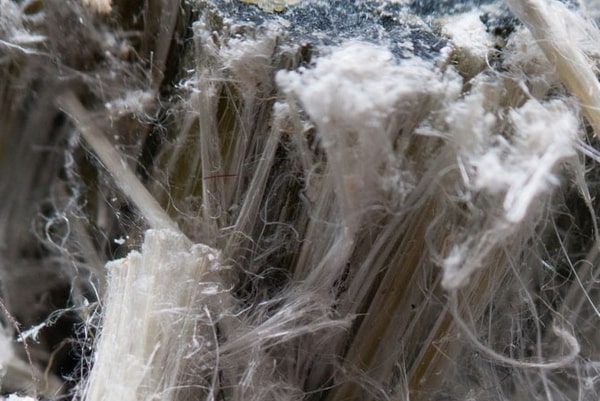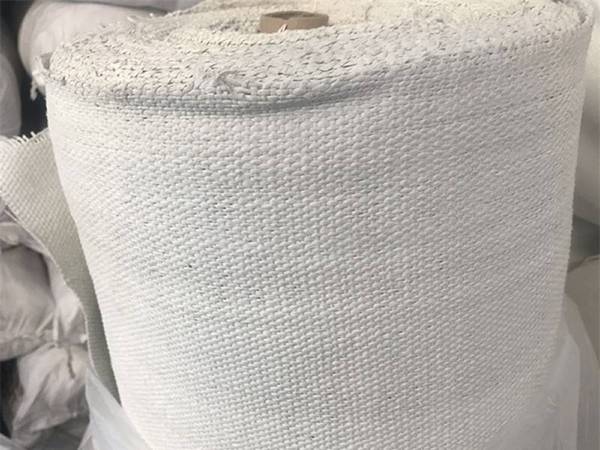What is Asbestos Fibre?
The most important fiber material among the mineral fibers is asbestos (AS), which had been used as early as 2500 years ago. Mineral fibers are of less importance in the textile trade. Asbestos is the most useful fibre of this class. The outstanding property of asbestos fibre is its resistance to heat and burning. They are also highly resistant to acids, alkalis, and other chemicals. The fibers are extracted from rocks and can be spun into yarns. The yarns can then be processed into wovens, knits, and other textile fabrics. These fibers are used to make special fire-proof and industrial fabrics. The fibers can also be added to other materials such as concrete and are very suitable for insulation.

Compared to natural and chemical fibers, asbestos fibers are extremely fine. The diameter of the elementary fibers varies between 0.02 and 0.2 μm. Further advantages of asbestos are its high-temperature stability and low cost. For these reasons, large amounts of asbestos have been mined and processed worldwide. In 1987, the world production was approximately 4 million tons, but this amount has declined in recent years. The largest mining areas can be found in Russia (46% market share), China and Kazakhstan (16% each), Brazil (10%), and Canada (8%).
Fine asbestos dust and fine dust containing asbestos are considered to be carcinogenic. In this case, the size of the dust corns and the fibers and not the asbestos material itself poses the problem. For this reason, the use of asbestos in Germany has been reduced significantly. There has been extensive research to replace asbestos with other natural and chemical fibers in various fields of application, such as work and fire protection, with heat and electrical insulation, as seals, in filtration, in friction linings, and technical products for construction (asbestos concrete) as well as with chemical products.
You may also like: Basics of Textile Fibers
The word asbestos is derived from a Greek word that means inextinguishable. Asbestos is a silicate material that comes from either serpentine or amphibole minerals. Serpentine comes in the fibrous form of Chrysotile, known as white asbestos, which is curly and most commonly used. Amphibole is either Amosite (brown asbestos) or Crocidolite (blue asbestos) both of which are needle-like. The rocks are mined and then crushed to release the fibres, which are very short in length. In the past, the longest of the fibres, approximately 1 cm in length, were used to make yarn, whereas the shorter ones were used to make paper and building materials. The white fibres could also be spun to make a yarn, although some care had to be taken because the fibres could be brittle, and their smooth surfaces caused the fibres to slip. Often, they would be blended with other fibres, such as cotton, to make a more stabilized yarn.
The mining, manufacture and use of asbestos has been totally banned in the United Kingdom since 1986, although impositions have been placed on various imports and uses since the early 1970s. The inhalation of the fibre causes asbestos is, a fatal form of lung cancer. Unfortunately, the extensive use of the product prior to 1986 date means that many buildings still contain asbestos for insulation and fireproofing. These products are still intact, and they are relatively safe but once they start to degenerate or become exposed the fibres must be removed safely by qualified people who wear protective clothing and masks.
Asbestos was renowned for its resistance to fire and used in buildings for fire protection. It also limits electrical and chemical damage. Traditionally, the hard mats on ironing boards were made from asbestos, but today, they are made from a man-made material.
Use of asbestos is banned in many countries because of its toxicity. Phenol–formaldehyde fibres have replaced asbestos in roof insulation and in curtains designed to protect from fire, intense heat and hot metal splash.
Properties of Asbestos Fibre:
- Fireproof
- Soft
- Strong
- Tensile strength is greater than steel
- Flexible
- Durable
- Poor conductor of electricity
- Insulating
- Absorbent (acoustic sounds)
- Acid-Resistant and Alkali-Resistant
Uses of Asbestos Fibre:
The use of asbestos has been known since ancient times when it was used as wicks in lamps. Asbestos is absorbent and it has wicking ability. Asbestos is resistant to both acid and alkali, therefore, it is used as filters for chemicals and other industrial purposes. It is used for flame-proof clothing of many kinds for laboratory, industrial and military uses. It is used in all types of protective equipment for fire fighting, fire screens, insulation for steam and hot pipes, brake lining insulative building materials, tapes and braids for electrical uses and items wherein non-combustibility is essential. Many times asbestos fibre is used with glass in making decorative fabric for curtains and draperies and for heat insulation.

Conclusion:
Asbestos has been spun into yarns and then woven into fire-resistant fabrics. Asbestos was used in manufacture of construction materials (asbestos cement sheet) but this has now been discontinued due to health considerations. Aramid polymer fibres such as NomexTM, and glass fibres have replaced asbestos in flame retardant fabric and yarn.
References:
- Fibres to Fabrics by Bev Ashford
- Textile Technology-An Introduction, 2nd Edition by Thomas Gries, Dieter Veit, Burkhard Wulfhorst
- Textile Engineering-An Introduction Edited by Yasir Nawab
- The Chemistry of Textile Fibres, 2nd Edition by Robert R. Mather & Roger H. Wardman
- Introduction to Textile Fibres by H. V. Sreenivasa Murthy
- https://textilelearner.net/asbestos-fiber-manufacturing-uses/
You may also like:
- Viscose Rayon Fibre – An Overview
- Properties, Production and Uses of Viscose Fiber
- Sisal Fiber: Properties, Production Process and Uses
- Properties, Processing and Uses of Kenaf Fiber
- Milkweed Fiber: Properties, Processing and Applications
- Kapok Fiber: Properties, Processing and Applications
- Hemp Fiber: Properties, Processing and Uses
- Properties, Extraction and Uses of Pineapple Leaf Fiber
- Physical, Chemical and Mechanical Properties of Jute Fibre
